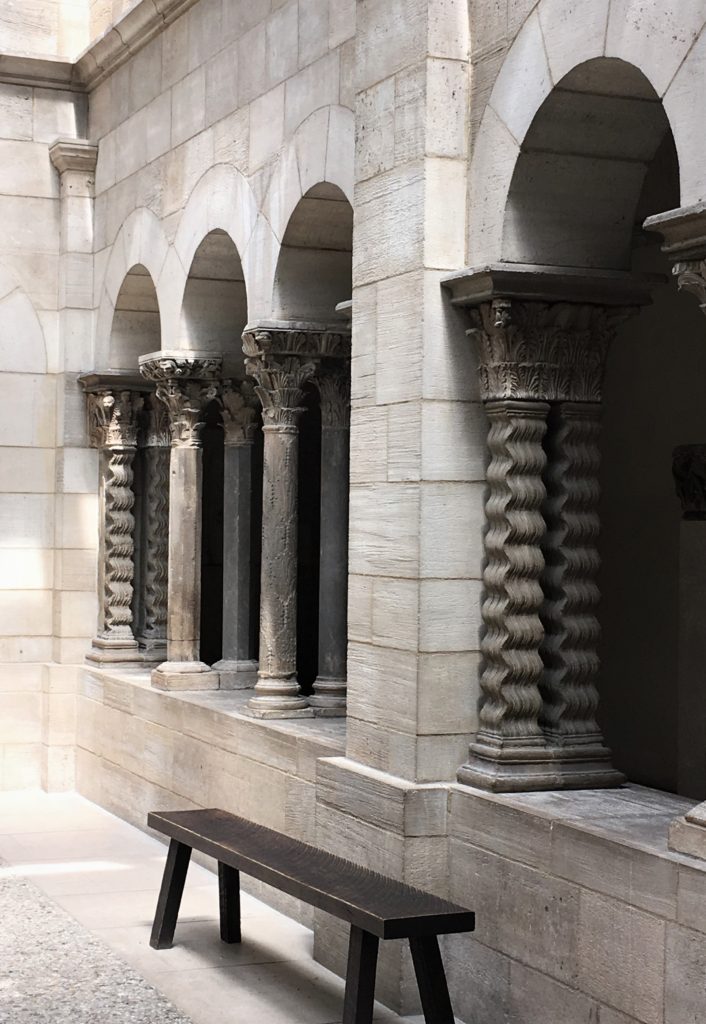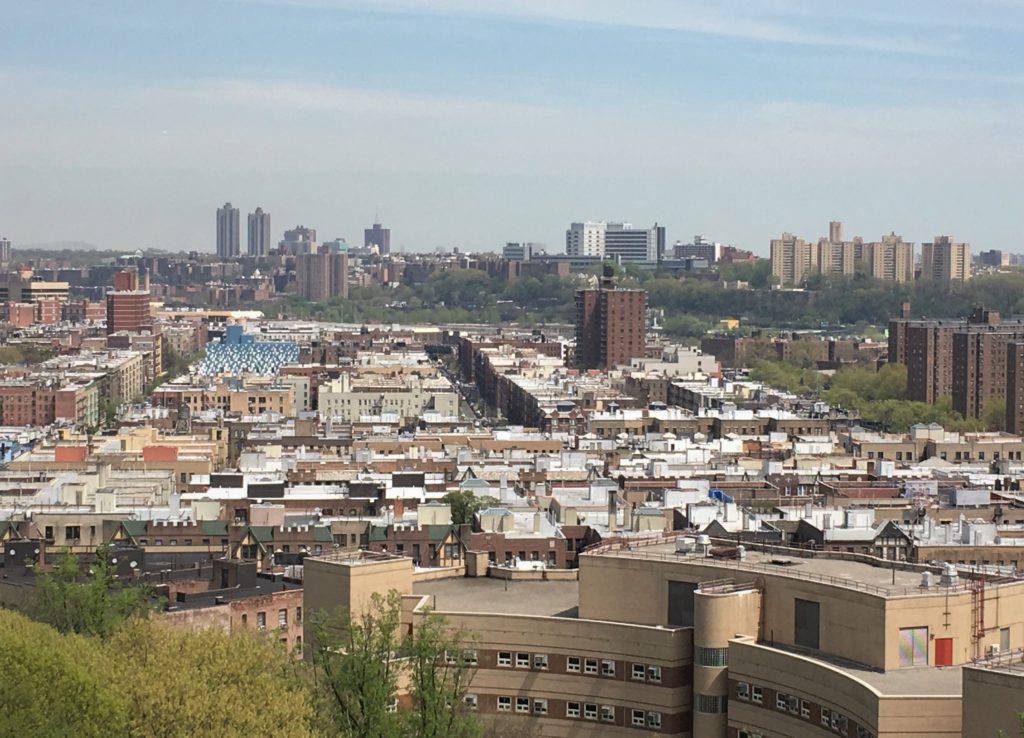The Metropolitan Museum tolled the bell at The Cloisters for one minute on Thursday, April 18 at 2:00 PM, the same time bells would be ringing across UK, in tribute to Notre Dame. Listening to the repeated announcements on the radio that morning, I couldn’t help thinking of the irony as well as the meaningfulness of the event.

The Cloisters, a little known and almost hidden branch of the Met, is located on the bluff of northern Manhattan in Fort Tryon Park. Originated from George Gray Bernard’s private collection,[1] the museum specialized in medieval arts and architectures, most of religious nature.[2] Instead of creating a replica of a particular building, The Cloisters is an ensemble piece of various architectural styles from different period and geographic origins. Elements from defunct cloisters were dismantled and transported from France and Spain[3]—some purchased with private donations and some on loan—reassembled on site.[4] Looking from afar, it has the appearance of an old ecclesiastical establishment. Yet, standing near, even untrained eyes can easily spot the variants in stylistic details.


Richard Powers in his masterpiece The Time of Our Singing grasped the transient character of The Cloisters perfectly. The protagonist’s physicist father introducing the relativity of space and time to his young boys while visiting the Museum: “Here is the fifteenth century. But if we turn here, we go into the fourteenth century.” He went on describing it: “This building is not a real building. It is a . . .mixed-up puzzle picture. Bits and pieces, from places with all different ages. Cut up in the Old World and shipped off to the New for rebuilding . . . like a little index. A versammeled word book of our past!”[5] The protagonist later returned to the location and lamented in grotesque terms about the “imitation, changeless garden” as an “assembled paradise, a stone’s throw from forty thousand Dominicans trying to survive New York’s inferno.”[6]

It has been over eighty years since the opening of The Cloisters yet there continues to be a sense of disconnection between its existence and the real world: geographically and spiritually. As a neighbor and a supporter of arts, I am deeply ambivalent about the existence and the artistic value of The Cloister. I love that artworks once almost lost are safely preserved, documented and shown to the world; I love that plants that have been grown for centuries will continue living in today’s garden. The detailed planning, the funding, the labor and the care that brought the creation of The Cloister to fruition should not be overlooked. At the same time, I loathe the idea of historical artifacts being cut to pieces and uprooted, purchased or loaned; I loathe the idea of mixing styles and cultures.
On the English homepage of Notre Dame de Paris, there is an excerpt of a message from Archbishop Michel Aupetit of Paris: “. . .Notre Dame, our beloved Cathedral, witnessed so many major events in our country, was destroyed by a frightening fire after resisting so long to the adventures of its history. France cries and with it all its friends from all over the world. It is touched in the heart because its stones are the testimony of an invincible hope which, by the talents, courage, genius and faith of the builders, has raised this luminous lace of stones, wood and glass.”[7] I sincerely hope that Notre Dame, having survived damages and destruction throughout the ages, will soon, with faith, hope, and love, be restored and remain where she has been for centuries.
[1]George_Grey_Barnard_Wiki
[2] Among its collection are the iconic Unicorn Tapestries: Metmuseum.org/art/collection/Unicorn Tapestries
[3] The interactive map on the official site of The Metropolitan Museum provides details—dates, origins and contains—of each gallery: Maps: Metmuseum_Cloisteres_Galleries
Building Stories: Contextualizing Architecture at the Cloisters
[4]History of The Cloisters: The film The Fuentidueña Apse: A Journey from Castile to New York documented the dismantlement and reassembly of the Apse
of Fuentidueña, loaned to the Metropolitan Museum by the Spanish government in 1957. It also provides information on the creation of The Cloisters.
[5] Richard Powers, The Time of Our Singing, (New York, Picador, 2002), 156.
[6]Ibid., 162. Fort Tryon is on the northern end of Washington Heights. In late 1930s when The Cloisters was constructed, this area was an enclave of Jewish immigrants. In 1970s, Soviet immigrants moved in, followed by larger number of Puerto Rico and Dominican Republic newcomers. Today, the narrow strip south of the park between Broadway and the Hudson River, identified as Hudson Heights, has become a middle-class neighborhood with mixed ethnic background. The neighborhood north of the park, known as Inwood, is still heavily populated by Caribbean immigrants, mostly lower income families. In 2018, the city council passed a rezoning plan of Inwood. This will likely make the area less affordable and more commercialized.
[7]http://www.notredamedeparis.fr/en/ The original text from April 16 reads: “Notre-Dame, notre chère cathédrale, témoin de tant d’événements majeurs de notre pays, a été détruite par un incendie effrayant après avoir résisté si longtemps aux péripéties de son histoire. La France pleure et avec elle tous ses amis du monde entier. Elle est touchée au cœur car ses pierres sont le témoignage d’une espérance invincible qui, par le talent, le courage, le génie et la foi des bâtisseurs, a élevé cette dentelle lumineuse de pierres, de bois et de verre.”
